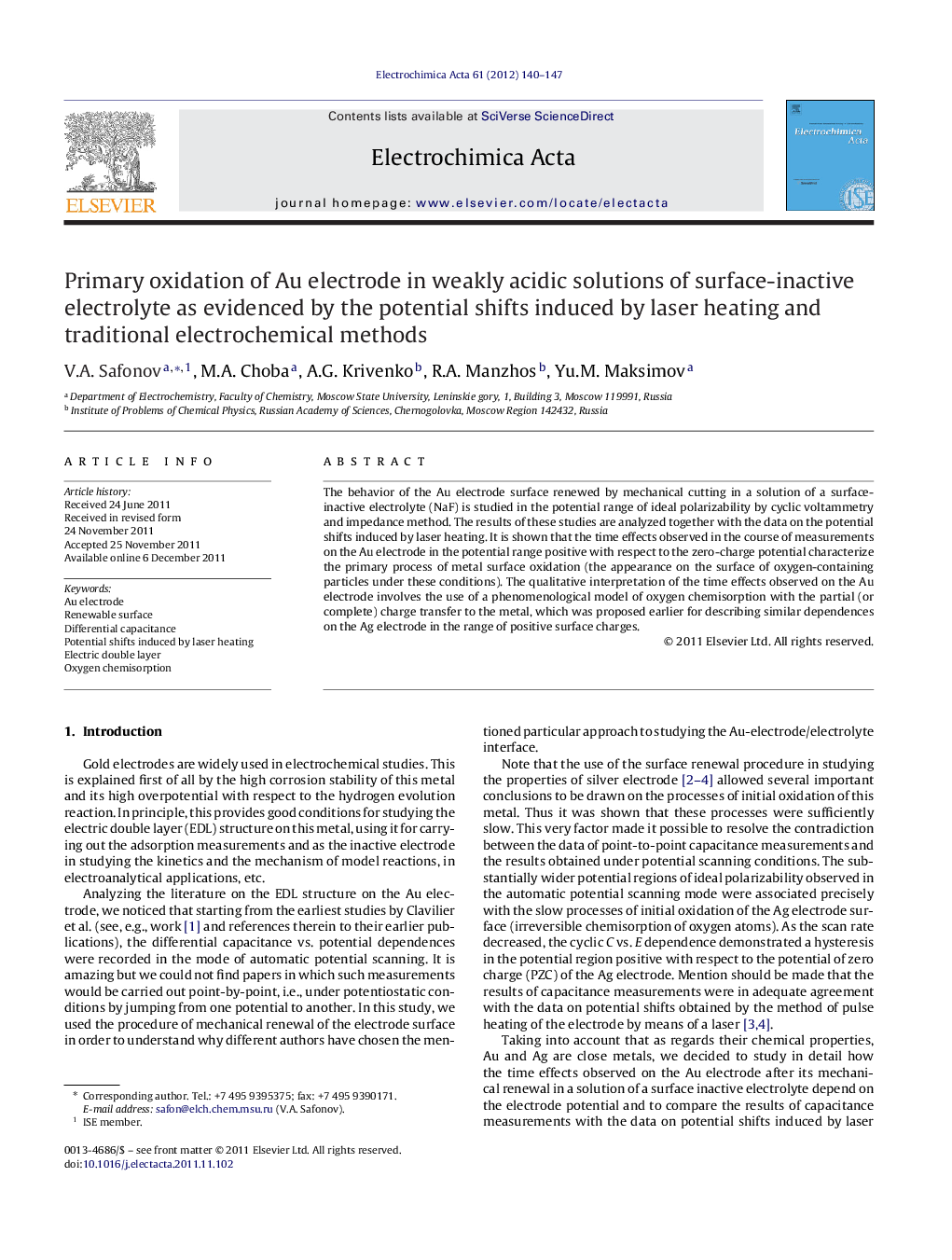| Article ID | Journal | Published Year | Pages | File Type |
|---|---|---|---|---|
| 188934 | Electrochimica Acta | 2012 | 8 Pages |
The behavior of the Au electrode surface renewed by mechanical cutting in a solution of a surface-inactive electrolyte (NaF) is studied in the potential range of ideal polarizability by cyclic voltammetry and impedance method. The results of these studies are analyzed together with the data on the potential shifts induced by laser heating. It is shown that the time effects observed in the course of measurements on the Au electrode in the potential range positive with respect to the zero-charge potential characterize the primary process of metal surface oxidation (the appearance on the surface of oxygen-containing particles under these conditions). The qualitative interpretation of the time effects observed on the Au electrode involves the use of a phenomenological model of oxygen chemisorption with the partial (or complete) charge transfer to the metal, which was proposed earlier for describing similar dependences on the Ag electrode in the range of positive surface charges.
► Electrochemical behavior of Au electrode in surface inactive electrolyte solutions. ► Method of potential shifts induced by laser heating. ► Transients of double layer capacities and potential shifts measured at Au electrode. ► Relation of time effects and initial oxidation processes at Au electrode surface. ► Model of double layer structure at Au electrode allowing for initial oxidation.
